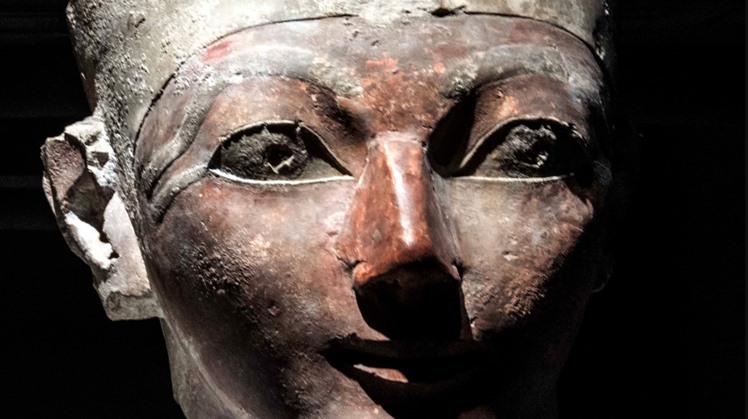Today, we shed light on an artifact, a head of one of the Osiris statues "in the mummy's body" of Queen Hatshepsut, where we continuously review a piece with its image and some information about that piece and the place of its display, as well as the era to which it belongs.
Today's piece in Sharm El-Sheikh Museum displays the head of one of the Osiris statues "in the form of a mummy" of Queen Hatshepsut, who was standing in front of the columns of the upper floor of her funerary temple, and on her head appears the remains of the Red Crown of Lower Egypt. The two wide ones decorated with long kohl line, streamlined eyebrows, and full cheeks bear clear feminine features. The statue dates back to the era of the modern state, the eighteenth dynasty, Thutmose the First.
Queen Hatshepsut is the powerful Egyptian queen who married her brother, King Tuthmosis II, and was called the Great Royal Wife, and upon his death she was the guardian of the throne of his son, the child King Thutmose III, who was nine years old at the time, and she ruled next to him from "1479 to 1457 BC." ,
It is worth mentioning that the Sharm El-Sheikh Museum includes 5,200 antiquities, the most important of which is a piece of mosaic from Alexandria dating back to the fourth century BC. AD represents the god Eros hunting deer, 10 pieces of King Tutankhamun's treasures, a statue of the goddess (Hathor) the goddess of beauty, love and music in the ancient Egyptians, and a group of Sphinx statues, a group of statues of sacred animals in ancient Egypt such as cats and scarabs, in addition to A number of paintings representing the Egyptian family through the different Egyptian eras.
The museum is located on an area of 191,000 square meters and consists of three exhibition halls and an entertainment area that includes restaurants and cafeterias.
 Thu, Jun. 16, 2022
Thu, Jun. 16, 2022